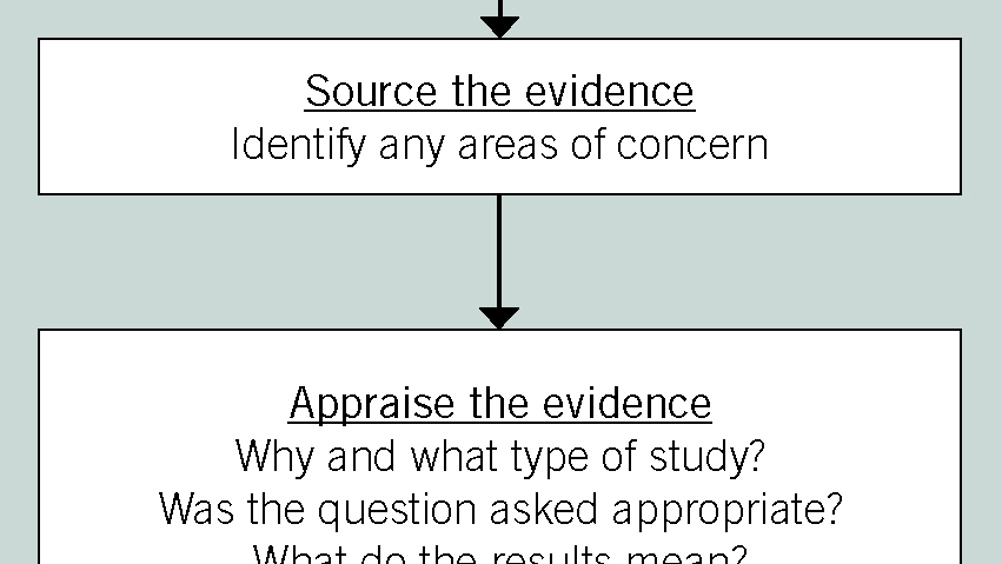Evidence-based practice in veterinary nursing

Abstract
As professionals veterinary nurses should always seek to provide the best possible care to their patients. Evidence-based practice will allow to the nurse to make informed decisions and provide a better standard of care. This article provides an introduction to evidence-based practice. It discusses how to source and appraise evidence and implement and evaluate the changes.
Evidence-based practice has been defined by Sackett et al (1997: 7) as ‘the conscientious, explicit and judicious use of current best evidence about the care of an individual patient’. The idea behind this is that a veterinary nurse would make decisions about a patient's care based on best practice through researched evidence.
With regulation imminent it is vital for there to be evidence and research to support veterinary nursing practice, procedures and care in order to progress the profession and strive for excellence.
Evidence-based medicine came to the forefront of human medicine more than a decade ago and it is now considered an essential part of human health care, with various journals (e.g. Evidence-based Nursing, BMJ Group) and books published on the subject (Sackett et al, 1997; Holland and Rees, 2010).
The roots of evidence-based medicine lie in a group of epidemiologists working at McMaster University in Canada in the 1970s. The group used the term ‘clinical appraisal’ to describe basic rules when reading articles in clinical journals (Holmes and Cockcroft, 2004a). Following on from this, formal teaching of evidence-based medicine was introduced into postgraduate medical training (Holmes and Cockcroft, 2004a). The basis of this teaching was to emphasize the philosophy of medical practice based on knowledge and understanding of medical literature supporting each clinical decision (Holmes and Cockcroft, 2004a).
Register now to continue reading
Thank you for visiting The Veterinary Nurse and reading some of our peer-reviewed content for veterinary professionals. To continue reading this article, please register today.
